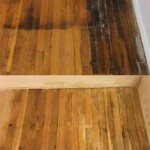Kitchen Flooring Installation: Essential Considerations and Pro Tips
Transforming your kitchen's flooring is an exciting project that can enhance the overall ambiance and functionality of this essential space. However, before embarking on this endeavor, it's crucial to consider several key aspects to ensure a successful and satisfying installation.
1. Choosing the Right Material
The type of flooring you select will significantly impact the durability, comfort, and maintenance requirements of your kitchen. Popular options include:
- Ceramic & Porcelain Tile: Durable, waterproof, and easy to clean.
- Vinyl Flooring: Resilient, water-resistant, and comes in various styles.
- Linoleum: Natural, eco-friendly, and resistant to moisture, stains, and bacteria.
- Hardwood: Classic, durable, but requires regular maintenance.
- Laminate: Affordable, easy to install, but not as durable as other materials.
2. Underlayment and Subfloor
The underlayment provides a cushioning layer between the subfloor and the flooring material, reducing noise and improving comfort. It's essential to ensure that the subfloor is level and in good condition before installing the flooring.
3. Moisture Considerations
Kitchens are inherently prone to moisture from spills, cooking, and cleaning. Choosing flooring materials that are resistant to water damage and installing proper moisture barriers is crucial to prevent warping, buckling, and other issues.
4. Installation Process
The installation process will vary depending on the flooring material you choose. It's generally recommended to hire a professional installer for tile, hardwood, and laminate flooring to ensure precise cuts, proper alignment, and a flawless finish.
5. Maintenance and Care
Once your new kitchen flooring is installed, proper maintenance is essential to preserve its beauty and longevity. Follow the manufacturer's recommendations for cleaning, sealing, and protecting the surface from scratches, stains, and other wear.
Pro Tips for a Successful Kitchen Flooring Installation:
* Plan ahead and measure the area accurately before purchasing materials. * Test flooring samples in your kitchen to see how they coordinate with your cabinets, countertops, and appliances. * Allow for movement joints to accommodate temperature and moisture fluctuations. * Protect the floor from heavy appliances and furniture by using floor protectors. * Regularly clean and maintain your flooring to keep it looking its best.
Tips For Installing A Kitchen Vinyl Tile Floor Merrypad

Before Or After Cabinet Installation Four Considerations To Help Finalizing Your Flooring Kraftmaid

Laminate Flooring In Kitchens Do It Yourself Installation

Do You Install Floating Floor Under Cabinets Wood Flooring

Do You Install Floating Floor Under Cabinets Wood Flooring

Do You Install Floating Floor Under Cabinets Wood Flooring

Best Kitchen Flooring Options For You Forbes Home

Everything You Need To Know About Installing Wooden Floors In The Kitchen

Kitchen Flooring Installation Easiest Material To Install Lx Hausys

A Step By Guide Laminate Flooring Installation
Related Posts








